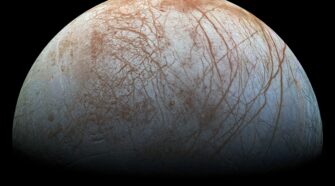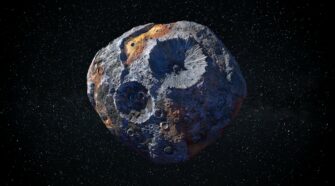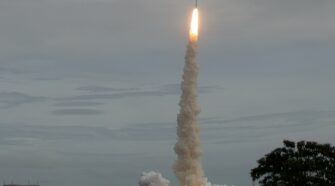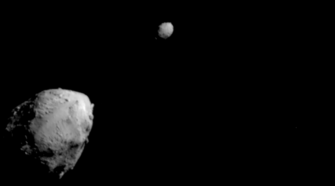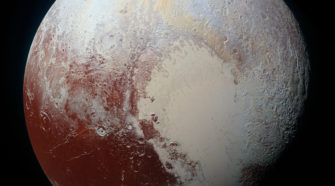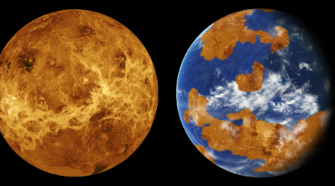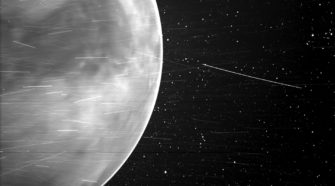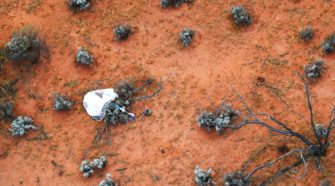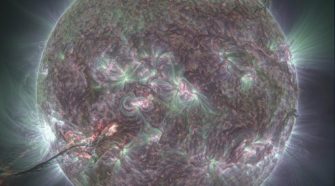Solar System
Missions to probe if subsurface oceans of Jupiter moons could support life
On Oct. 14, 2024, NASA launched a robotic spacecraft named Europa Clipper to Jupiter’s moons. Clipper will reach the ice-covered Jovian moon Europa in 2030 and spend several years collecting and sending valuable data on the moon’s potential habitability back to Earth. Clipper isn’t the only mission highlighting researchers’ interest in Jupiter and its moons. …
Psyche visit of a metal world may reveal mysteries of Earth’s interior
French novelist Jules Verne delighted 19th-century readers with the tantalizing notion that a journey to the center of the Earth was actually plausible. Since then, scientists have long acknowledged that Verne’s literary journey was only science fiction. The extreme temperatures of the Earth’s interior – around 10,000 degrees Fahrenheit (5,537 Celsius) at the core – …
ESA’s Juice lifts off to probe secrets of Jupiter’s icy moons
ESA’s Jupiter Icy Moons Explorer (Juice) lifted off on an Ariane 5 rocket from Europe’s Spaceport in French Guiana at 14:14 CEST on 14 April. The successful launch marks the beginning of an ambitious voyage to uncover the secrets of the three ocean worlds around the giant planet Jupiter, the moons of Ganymede, Callisto and …
DART mission a success as NASA spacecraft crashes into asteroid
In a world first, NASA has crashed a spacecraft into an asteroid in an attempt to push the rocky traveler off its trajectory. The Double Asteroid Redirection Test – or DART – is meant to test one potential approach that could prevent an asteroid from colliding with Earth. David Barnhart is a professor of astronautics …
QuizMe: Pluto
Test your knowledge about Pluto. This space quiz contains 15 questions about Pluto, its moons, and our exploration of the former ninth planet, now classified by scientists as a dwarf planet. Discovered by humanity less than 100 years ago, Pluto has largely remained an enigma ever since. It was not until 2015 that the first …
Venus was once more Earth-like, until its climate dramatically changed
We can learn a lot about climate change from Venus, our sister planet. Venus currently has a surface temperature of 450℃ (the temperature of an oven’s self-cleaning cycle) and an atmosphere dominated by carbon dioxide (96 per cent) with a density 90 times that of Earth’s. Venus is a very strange place, totally uninhabitable, except …
Parker Solar Probe catches unexpected glimpse of surface of Venus
The Parker Solar Probe captured an absolutely stunning glimpse of Venus during its third close flyby of the planet in July 2020, as seen in a newly released image from NASA and the mission’s science team. Although the Sun is the focus of the Parker Solar Probe’s seven-year-long mission to “touch” the Sun and fly …
Japan’s Hayabusa2 brings back dust and rock samples from asteroid
Japanese space scientists are positively gleeful as they have now confirmed that their ambitious Hayabusa2 spacecraft successfully collected over 5 grams of pristine black as coal soil and rock samples gathered from the ancient near-earth asteroid Ryugu in a re-entry capsule that parachuted safely to Earth earlier this month after a six-year roundtrip scientific journey …
Total solar eclipses reveal the dark and stormy side of the Sun we never see
In astronomy, we have a common saying: “good luck, and clear skies”. For an eclipse chaser like me, this is especially important. We have two minutes and no second chance – one small cloud can spoil everything. Thousands of tourists turn up to see them, along with a few dozen scientists, for which the eclipse …
OSIRIS-REx attempting to bring back rock and dust samples from asteroid Bennu
Imagine parallel parking a 15-passenger van into just two to three parking spaces surrounded by two-story boulders. On Oct. 20, a University of Arizona-led NASA mission 16 years in the making will attempt the astronomical equivalent more than 200 million miles away. A NASA mission called OSIRIS-REx will soon attempt to touch the surface of …

